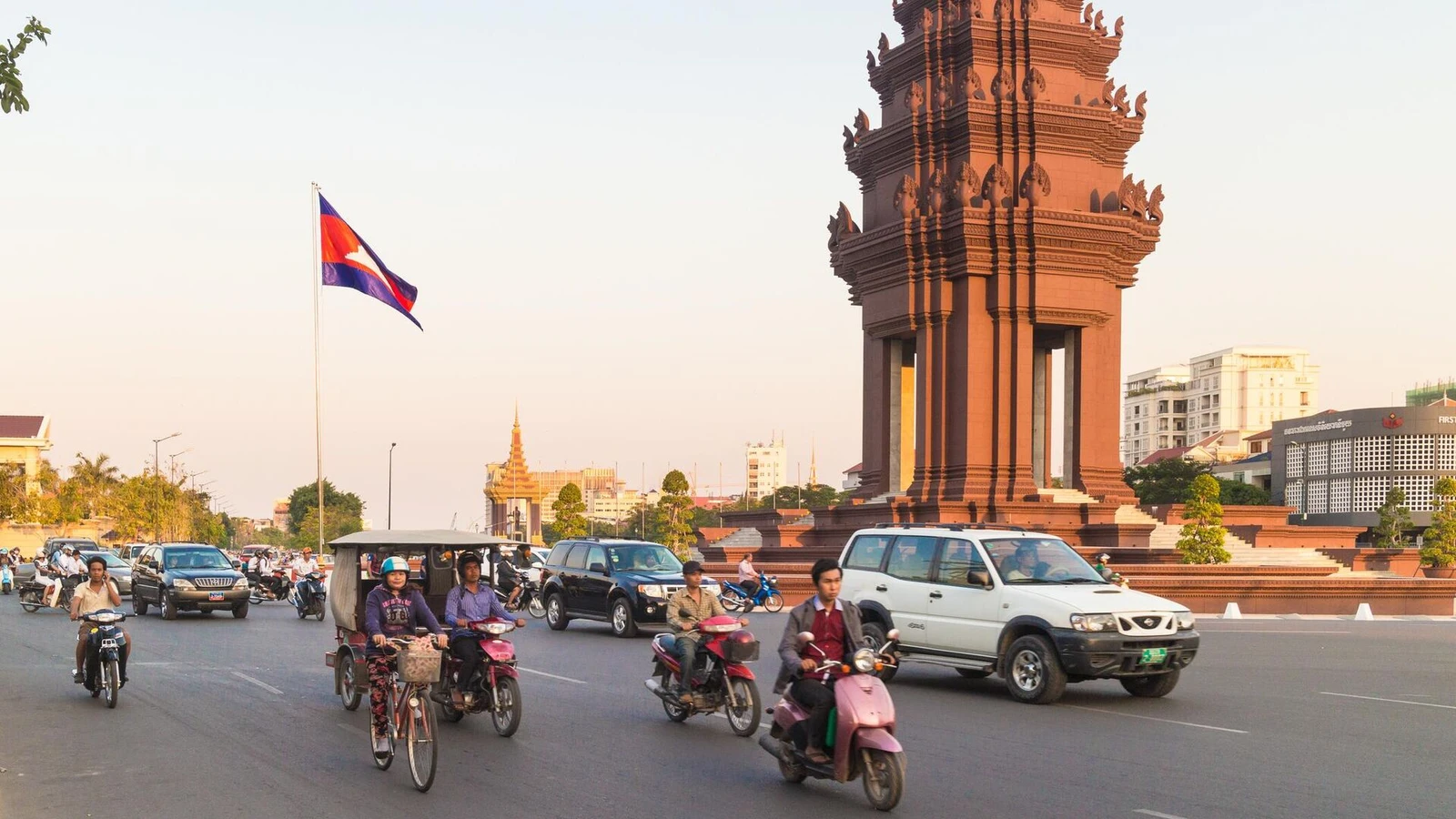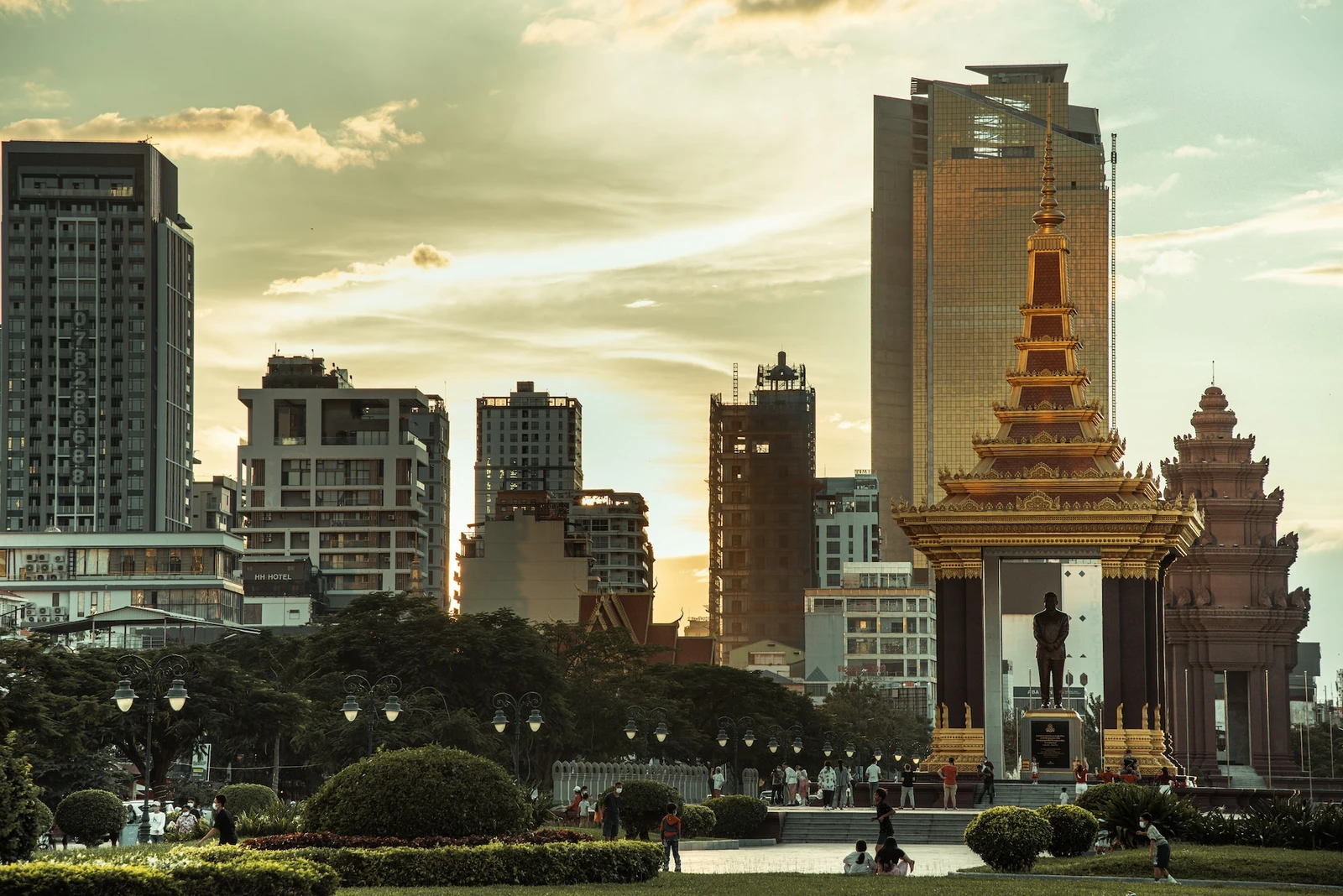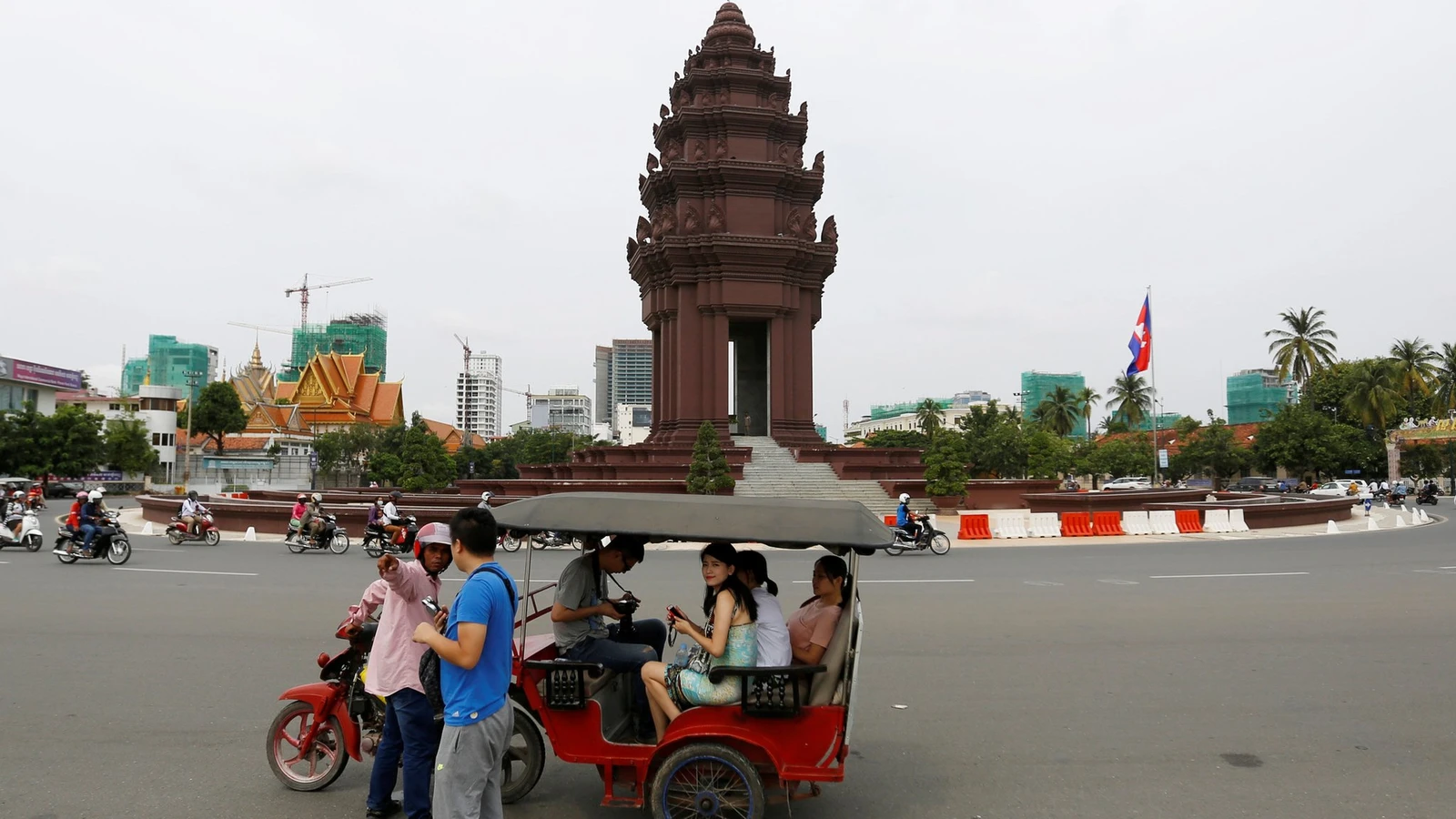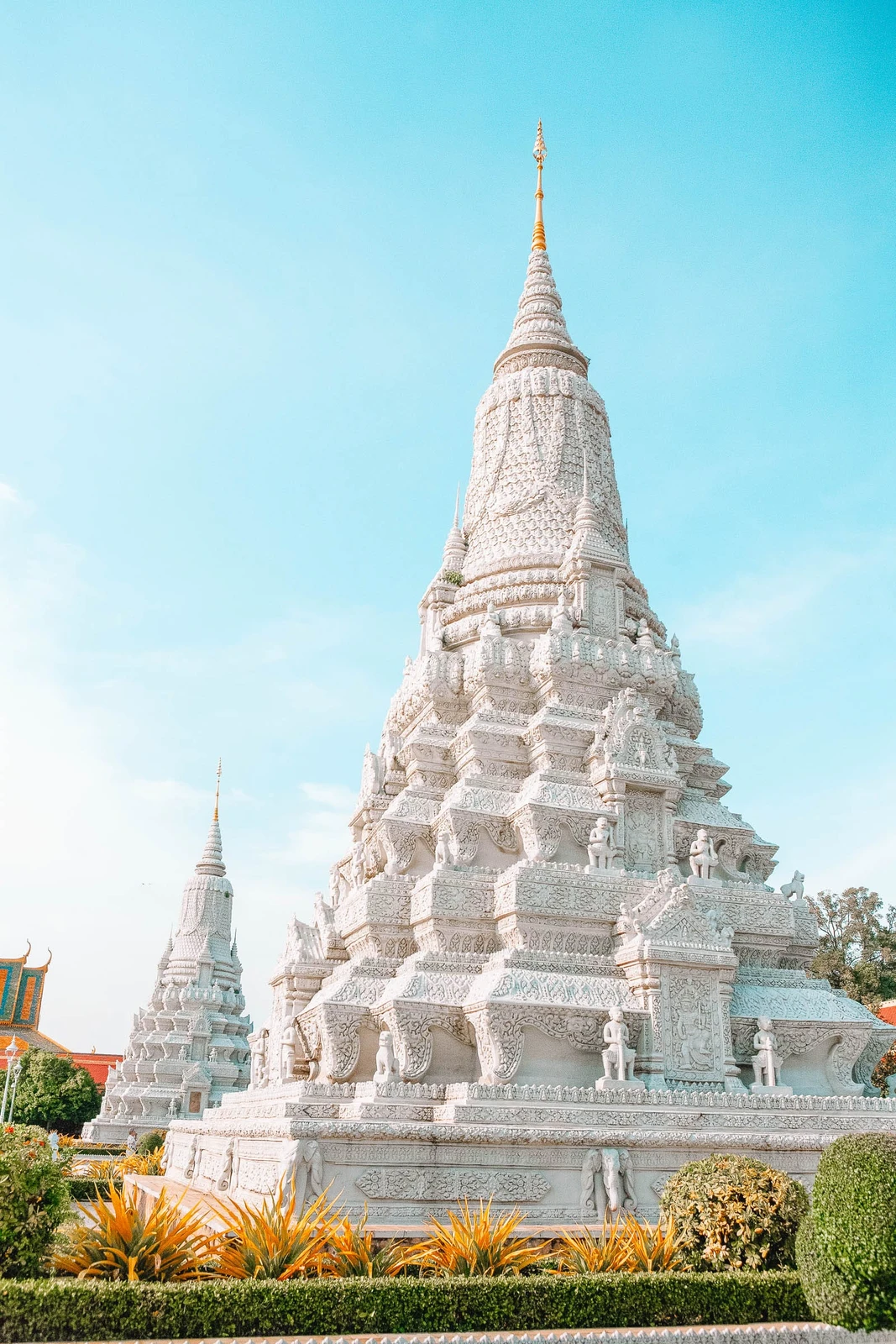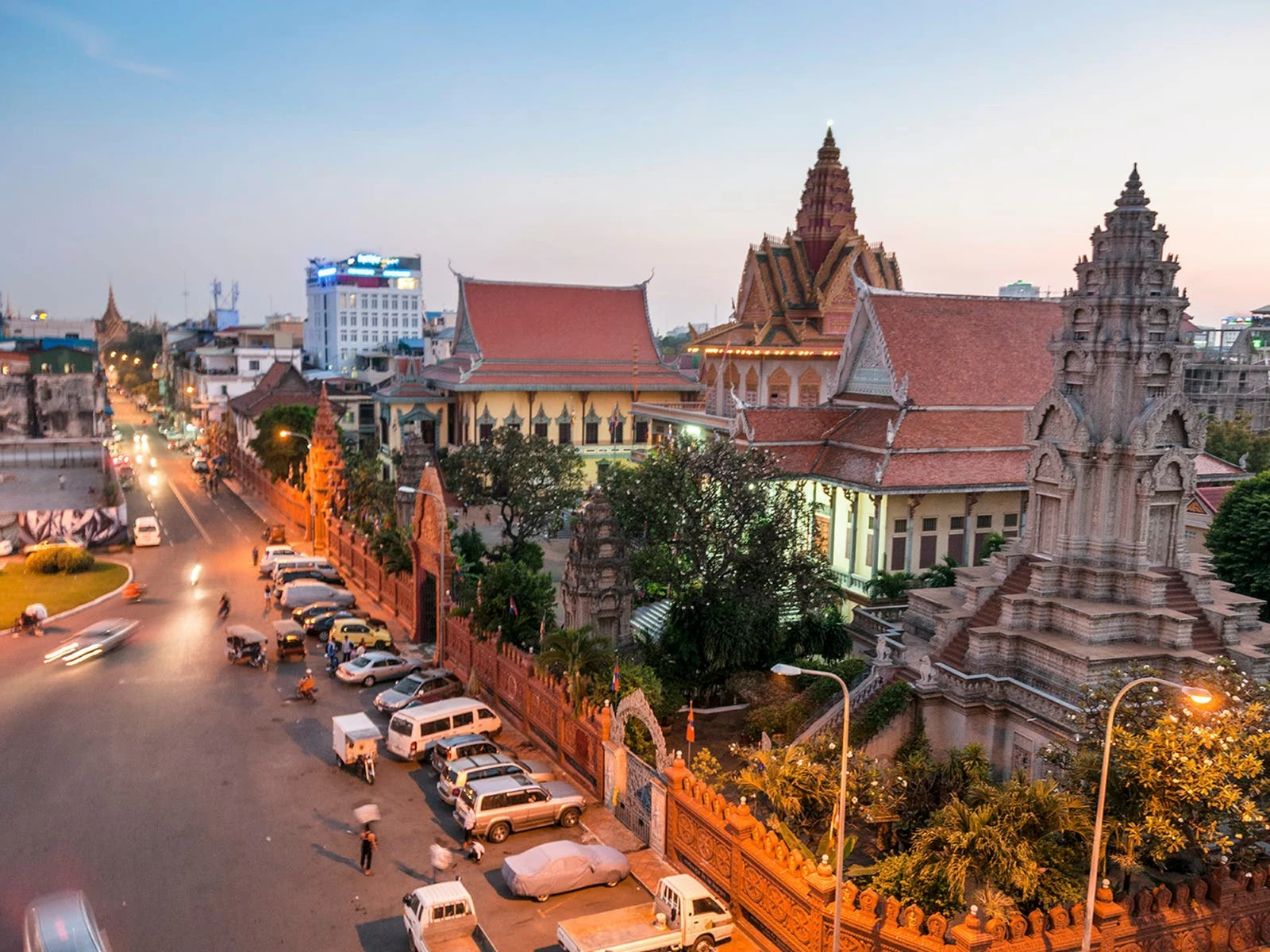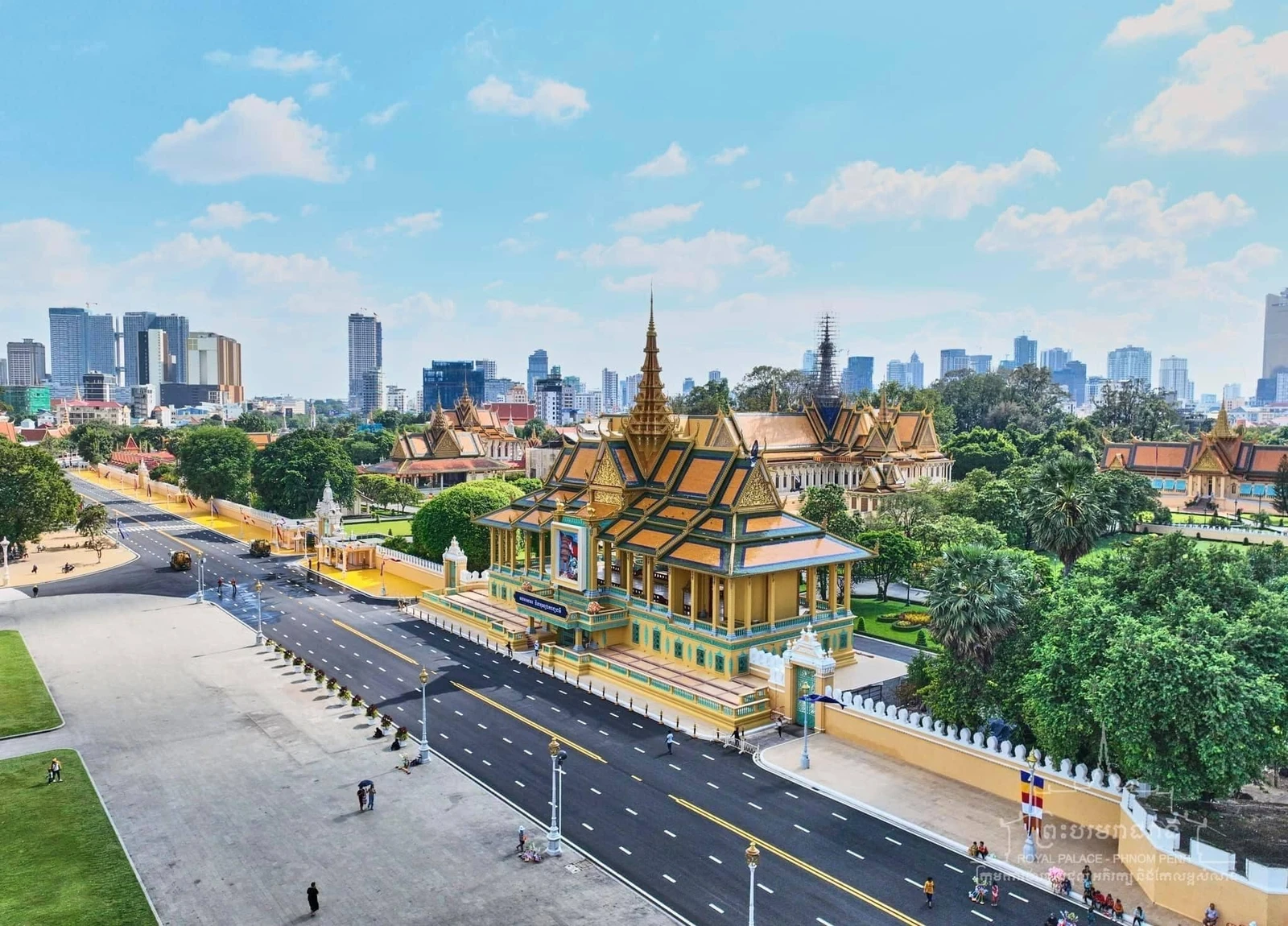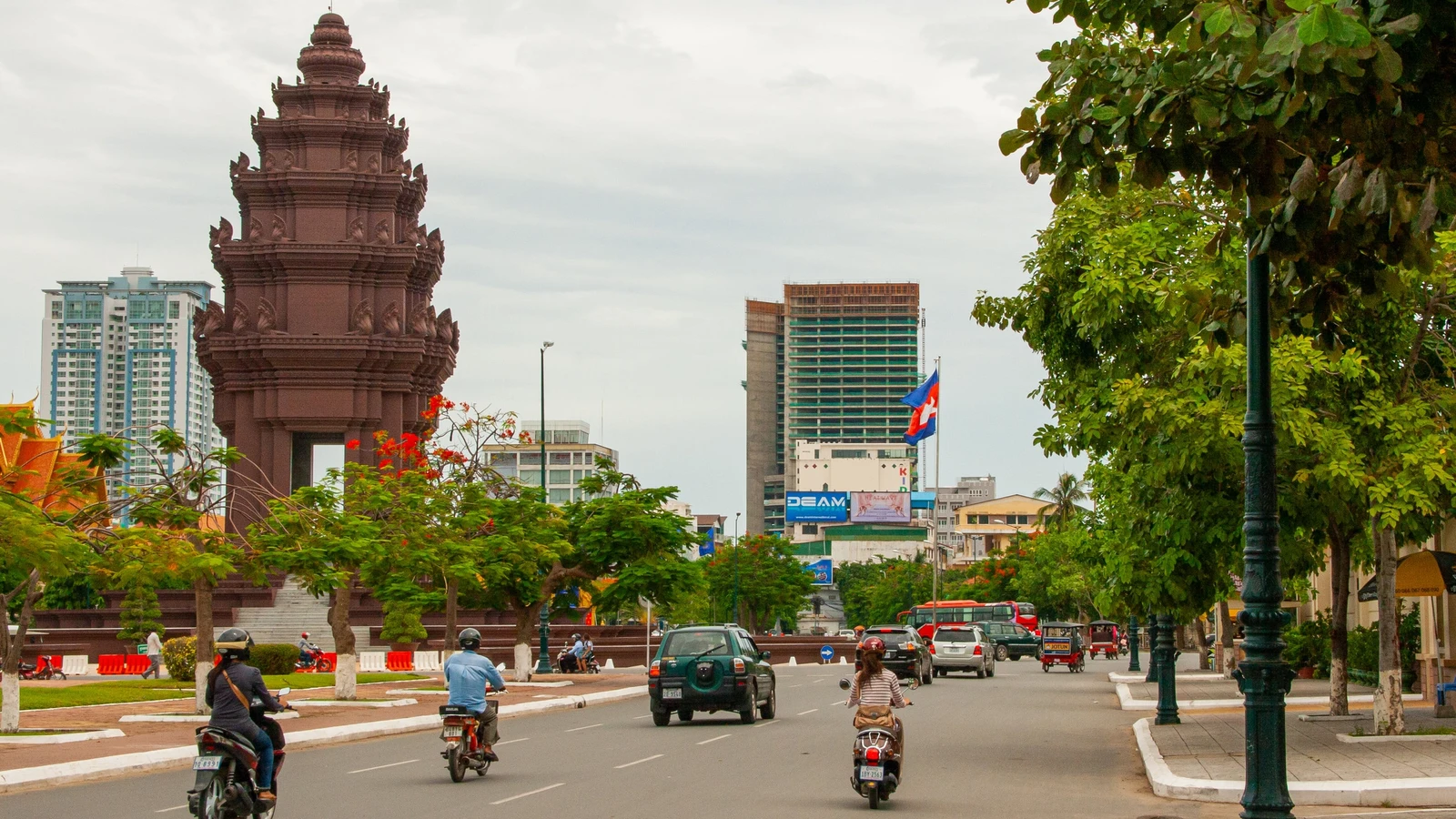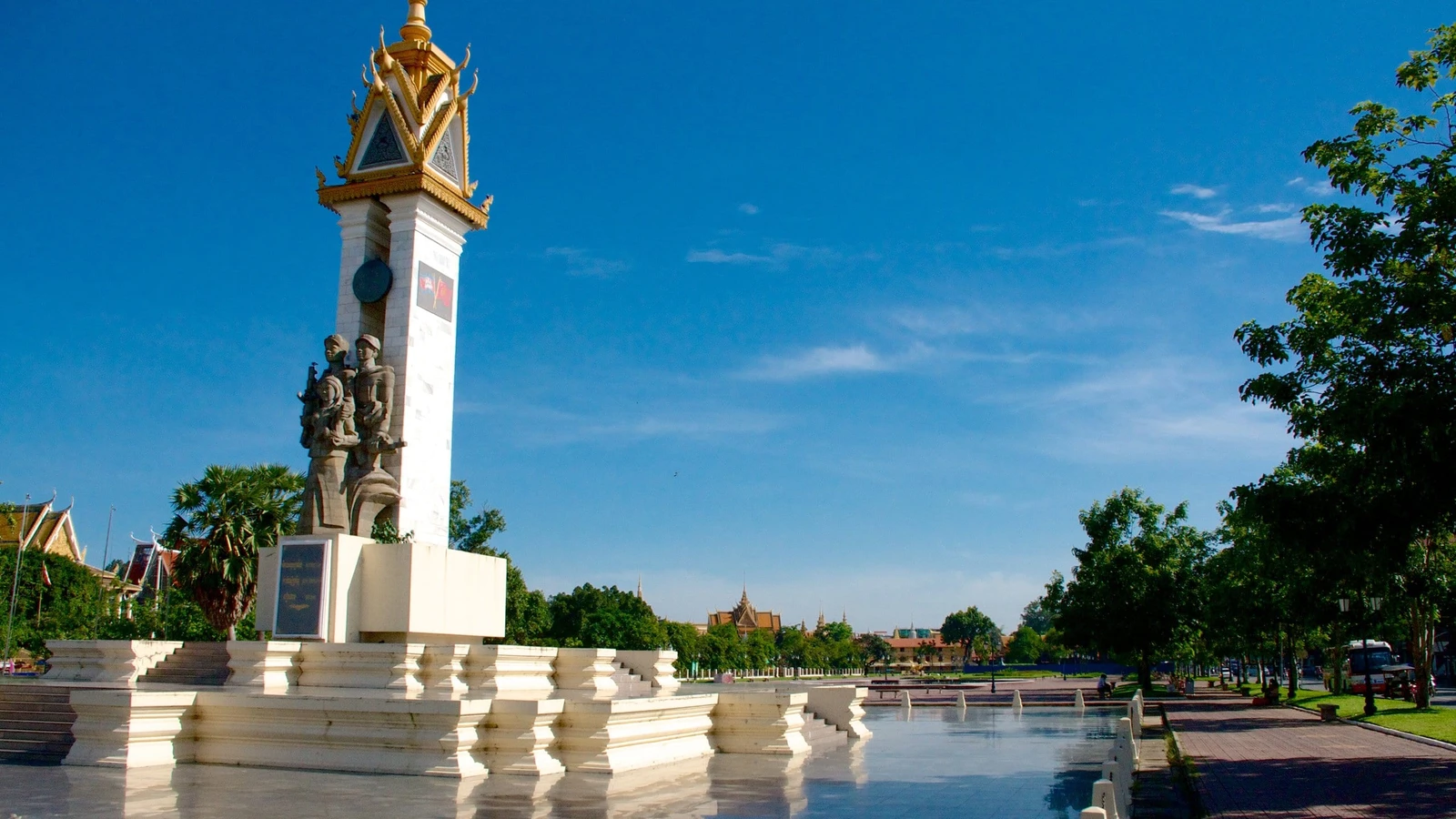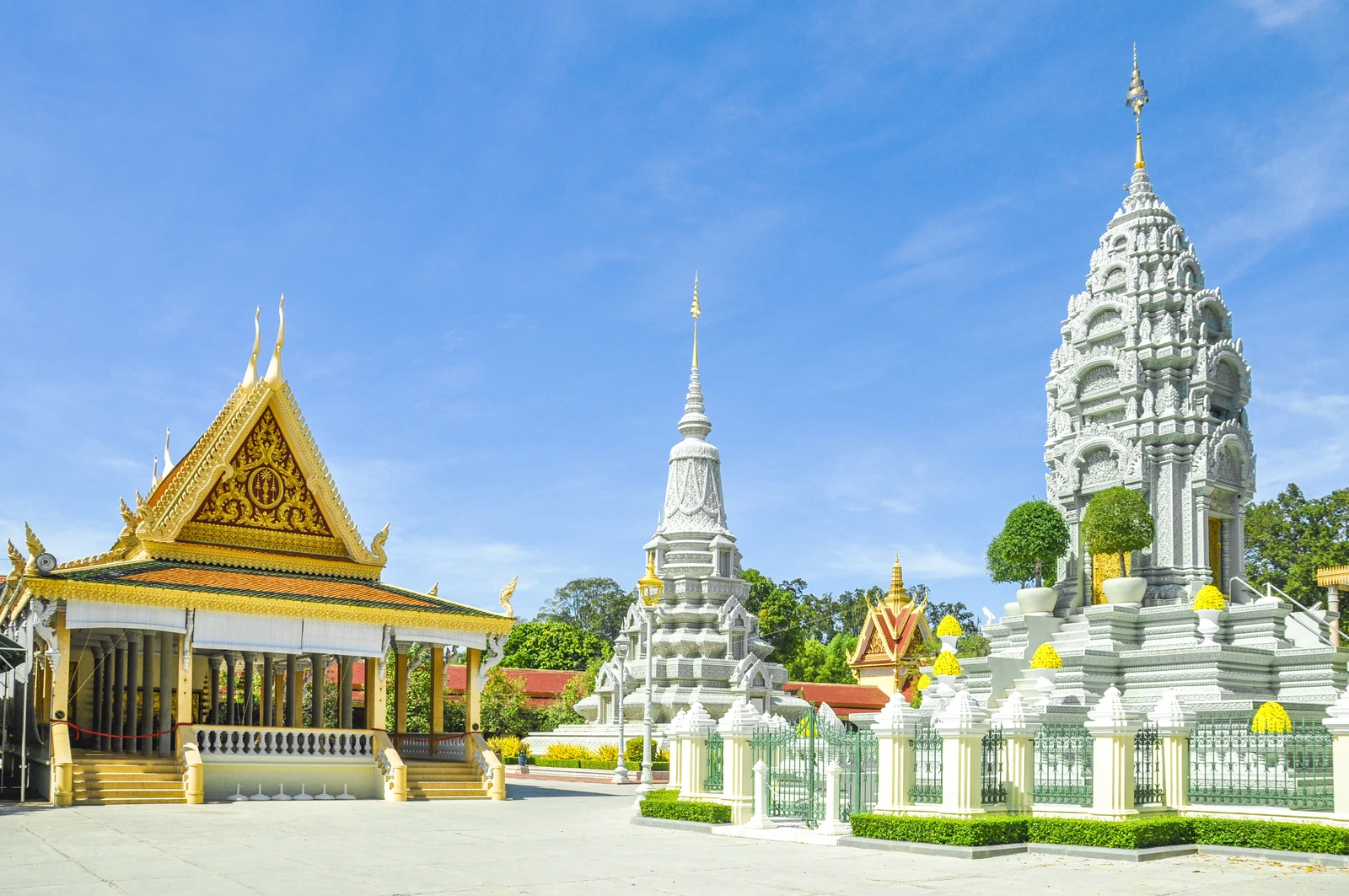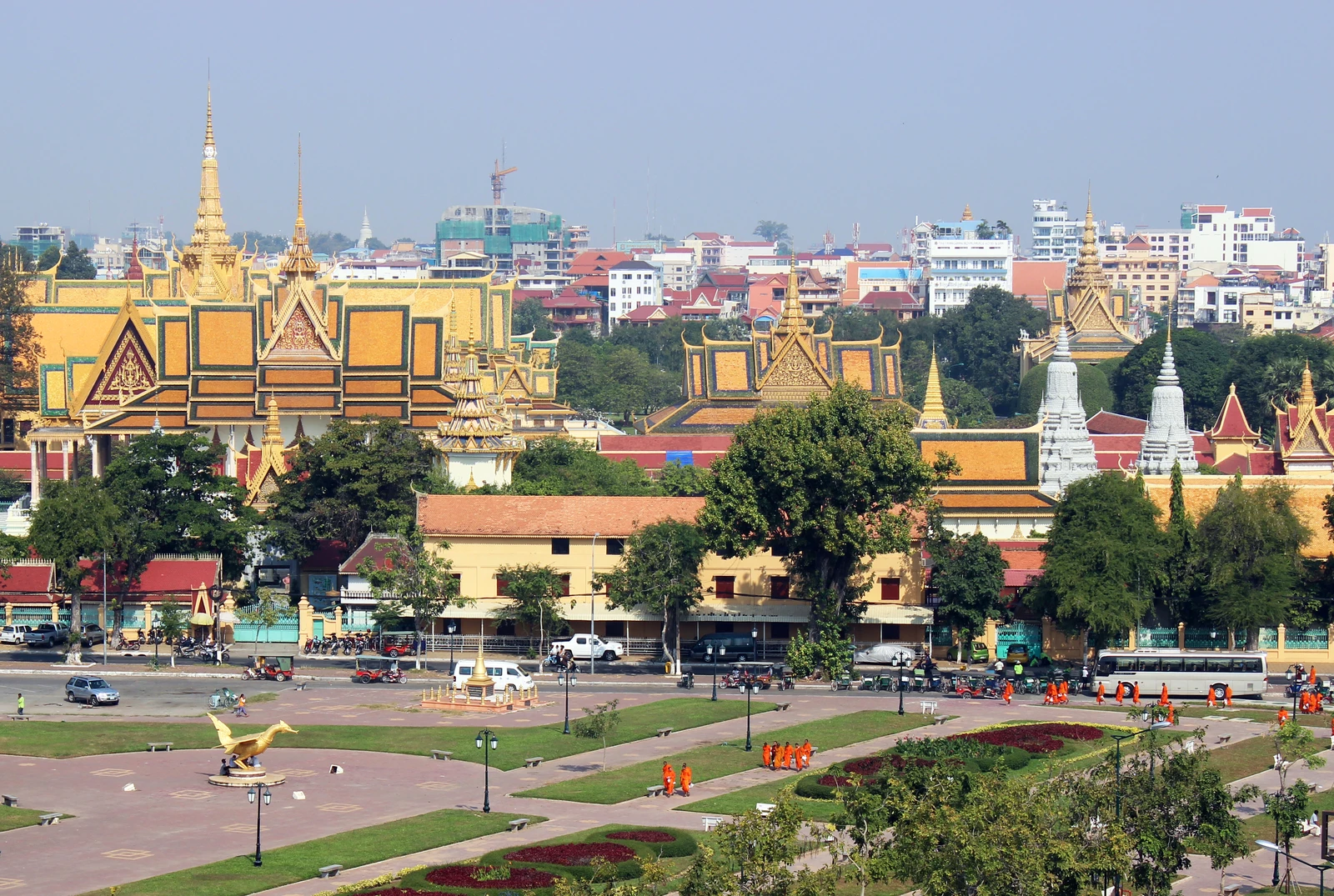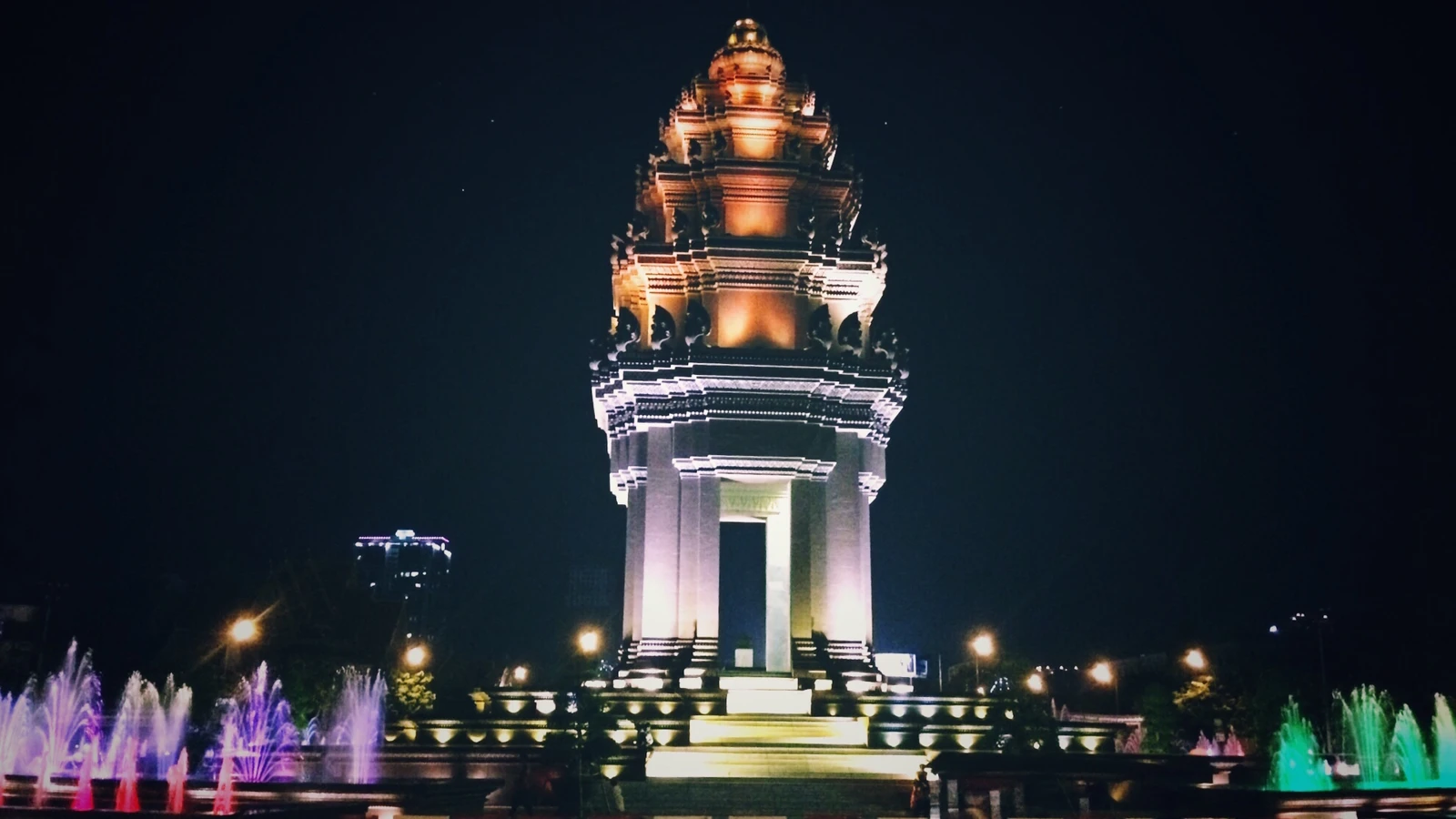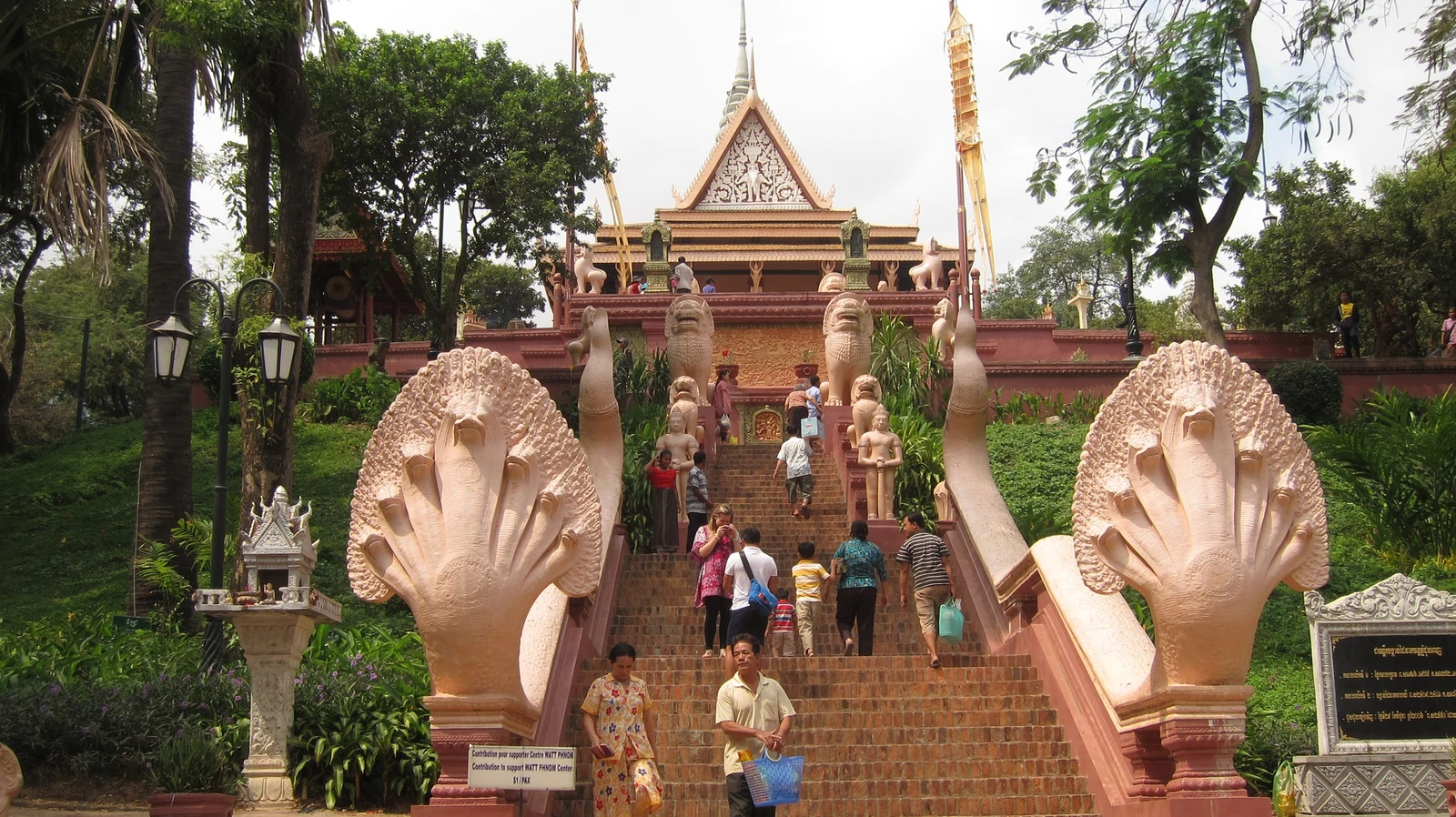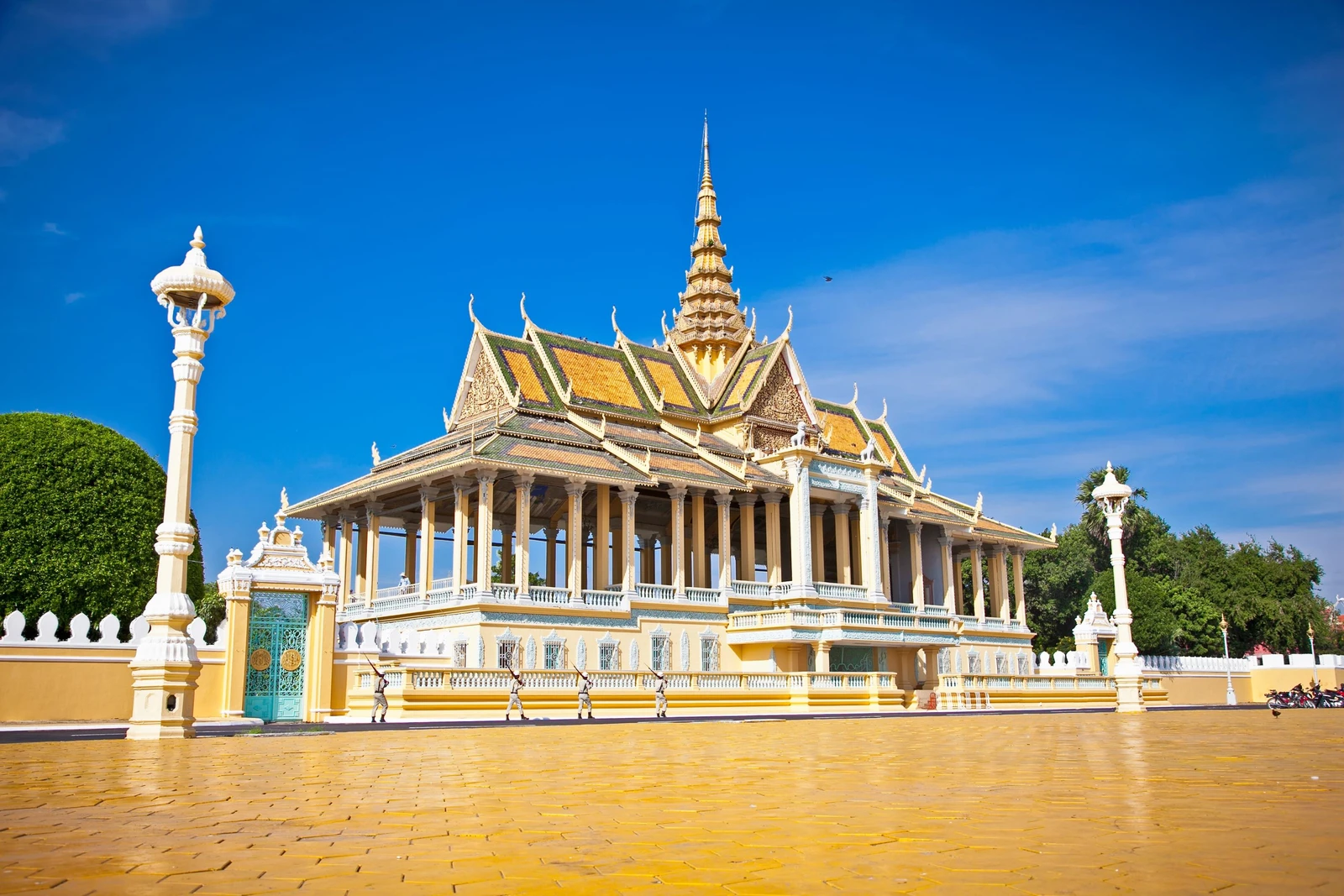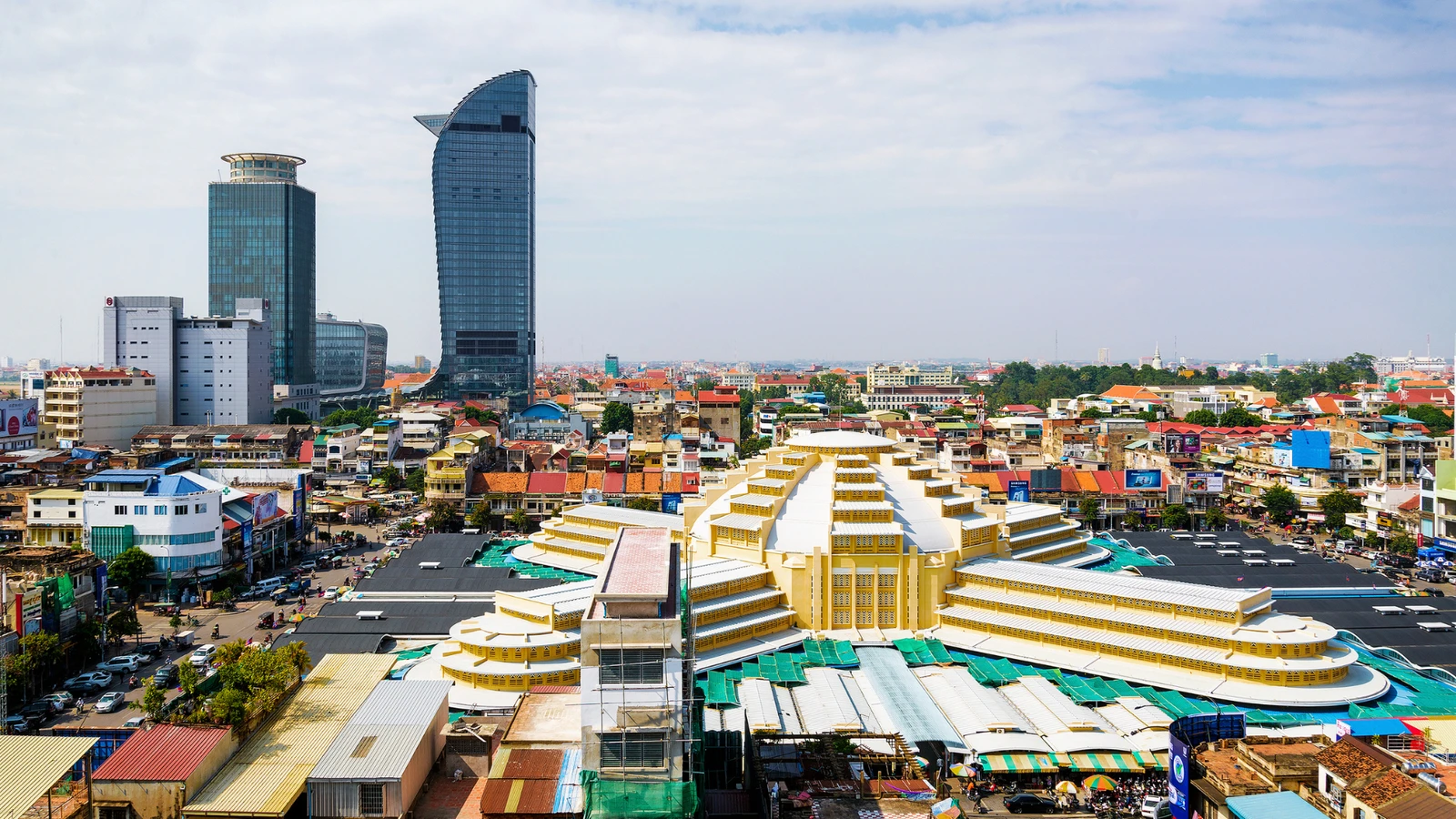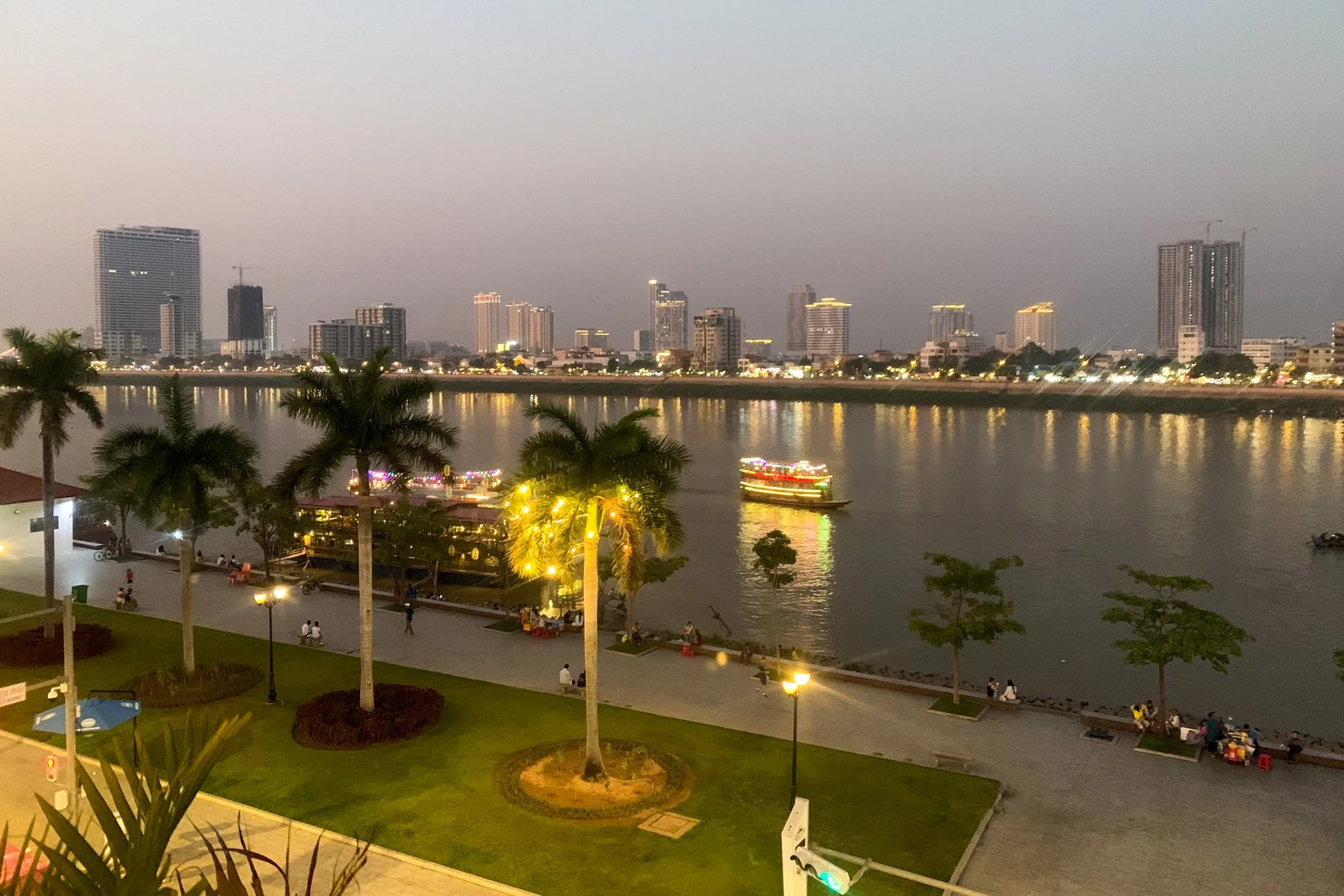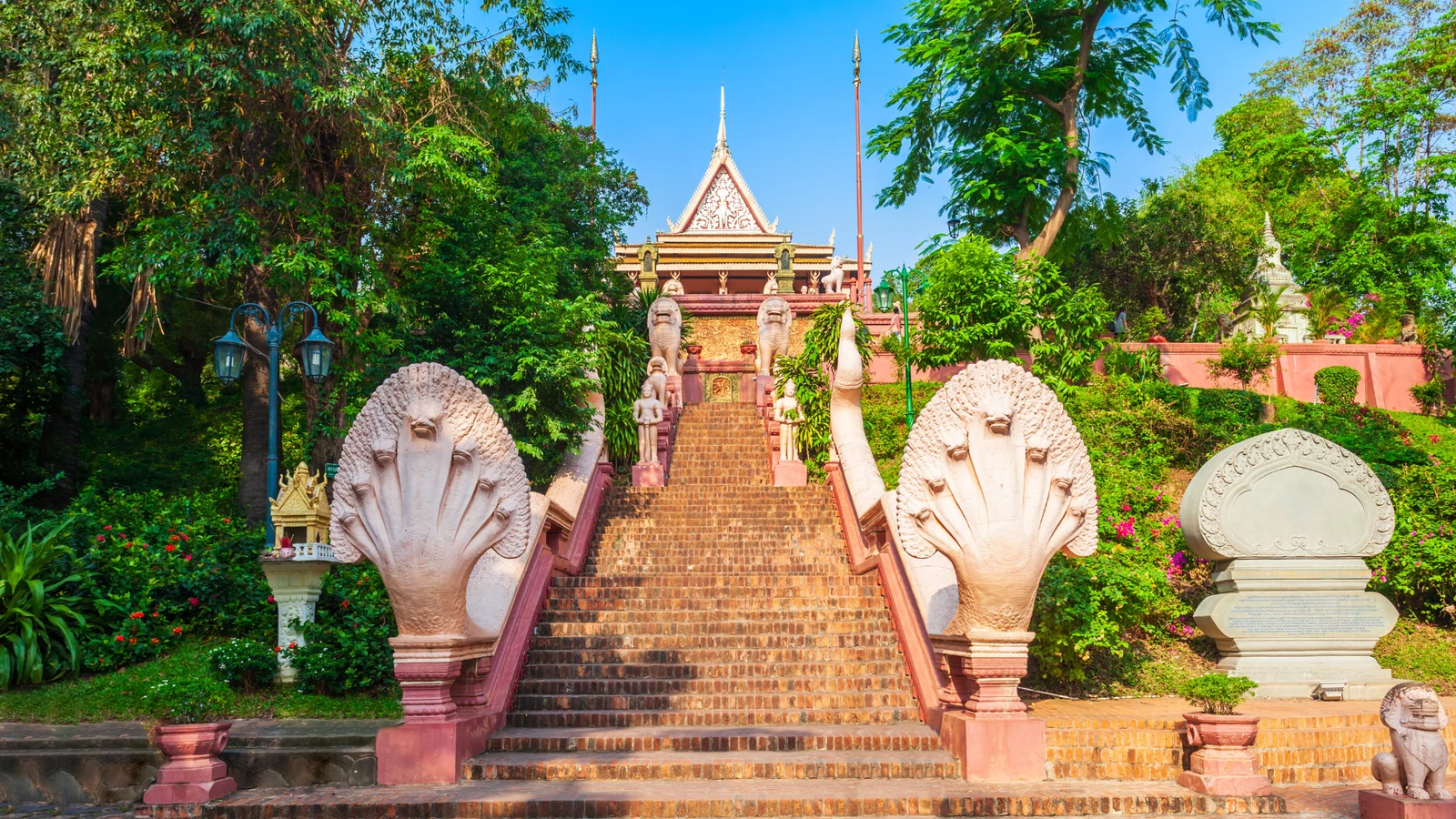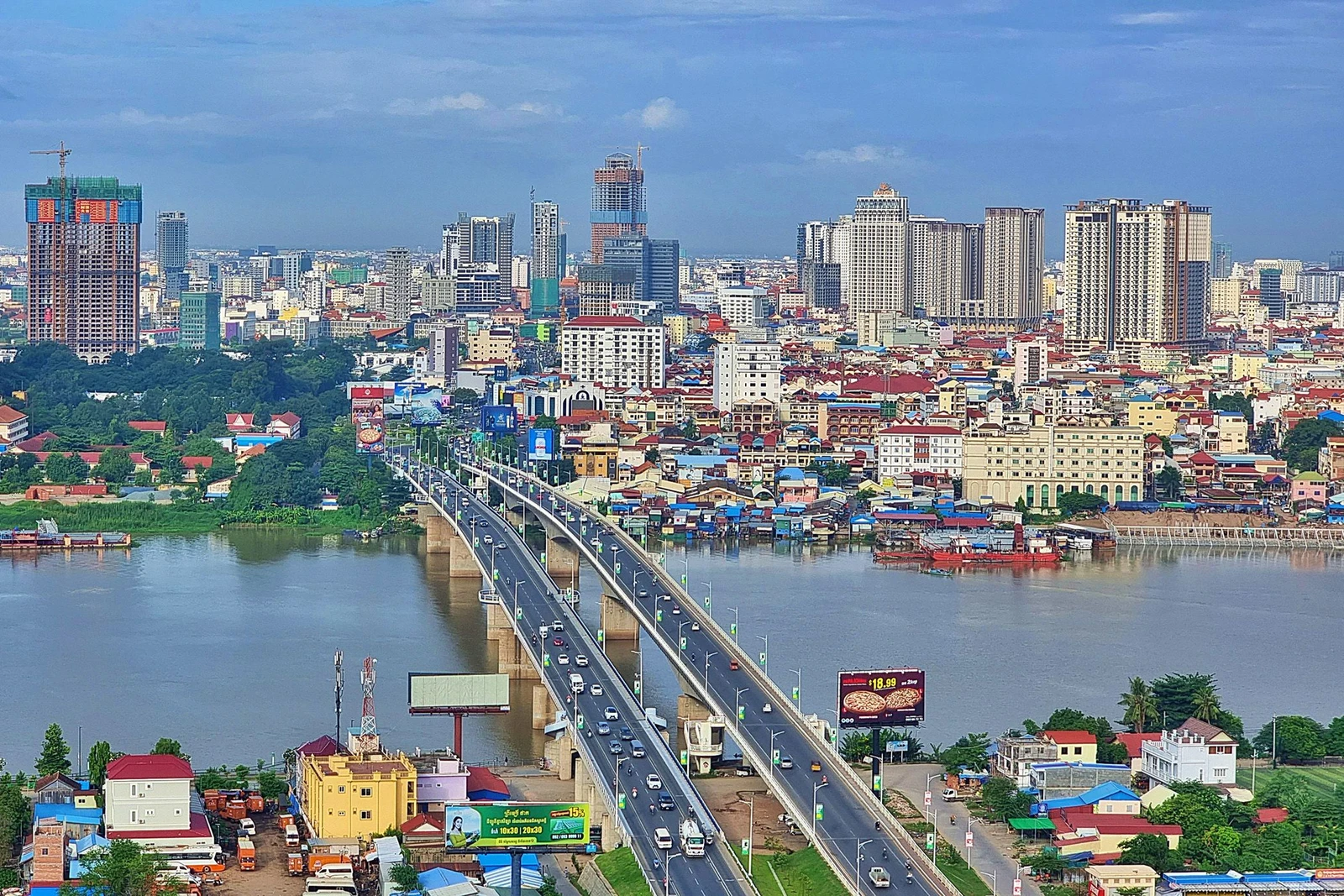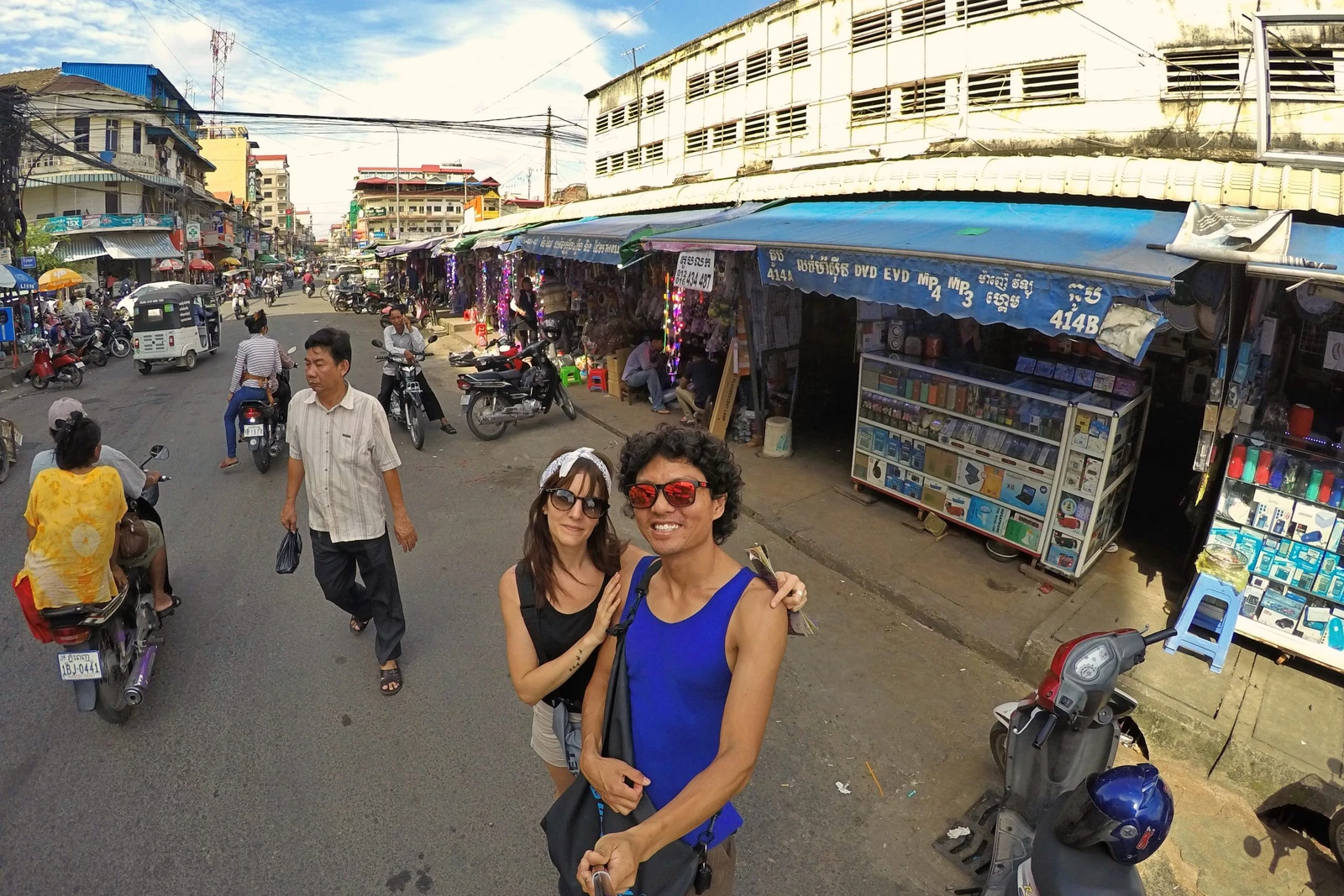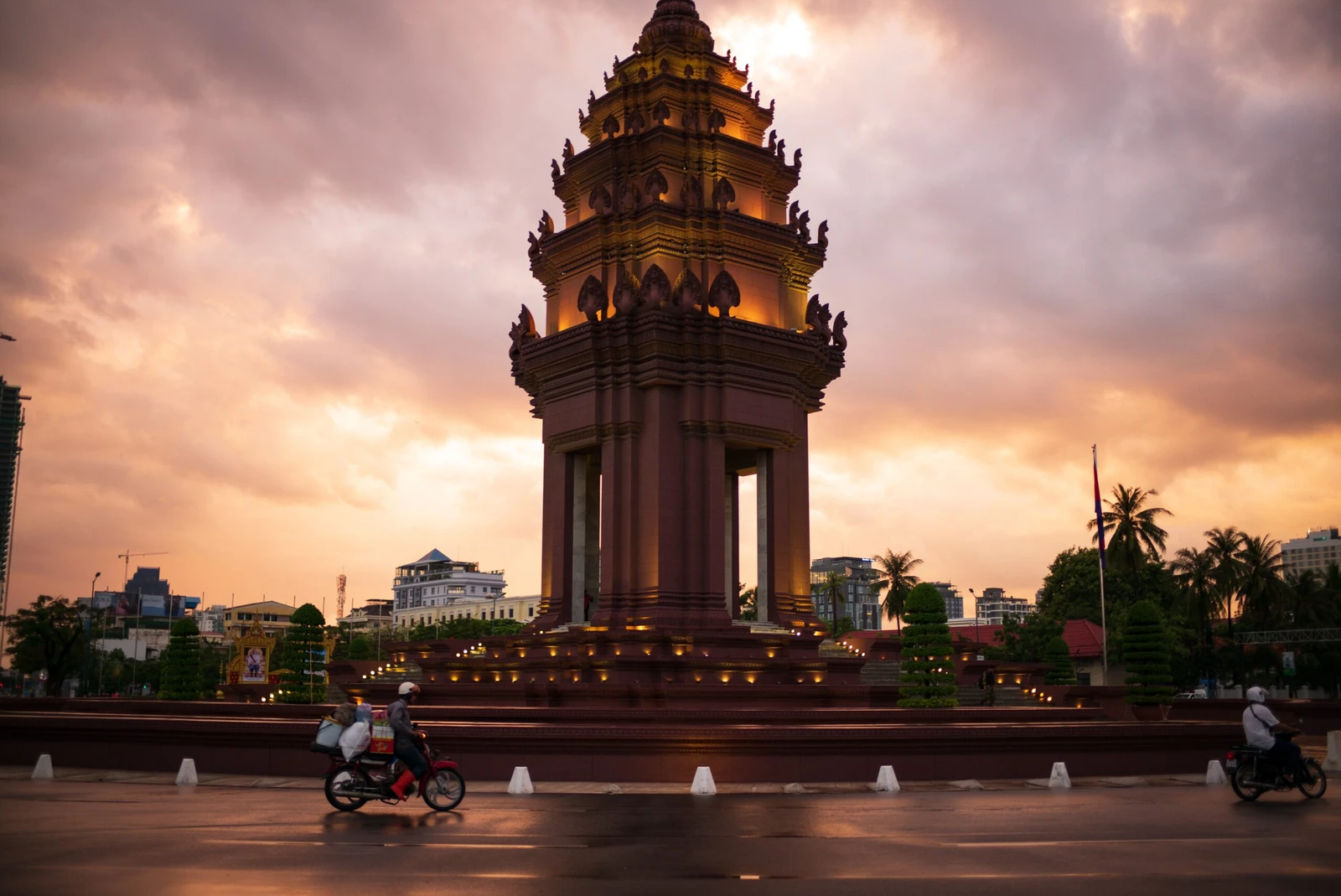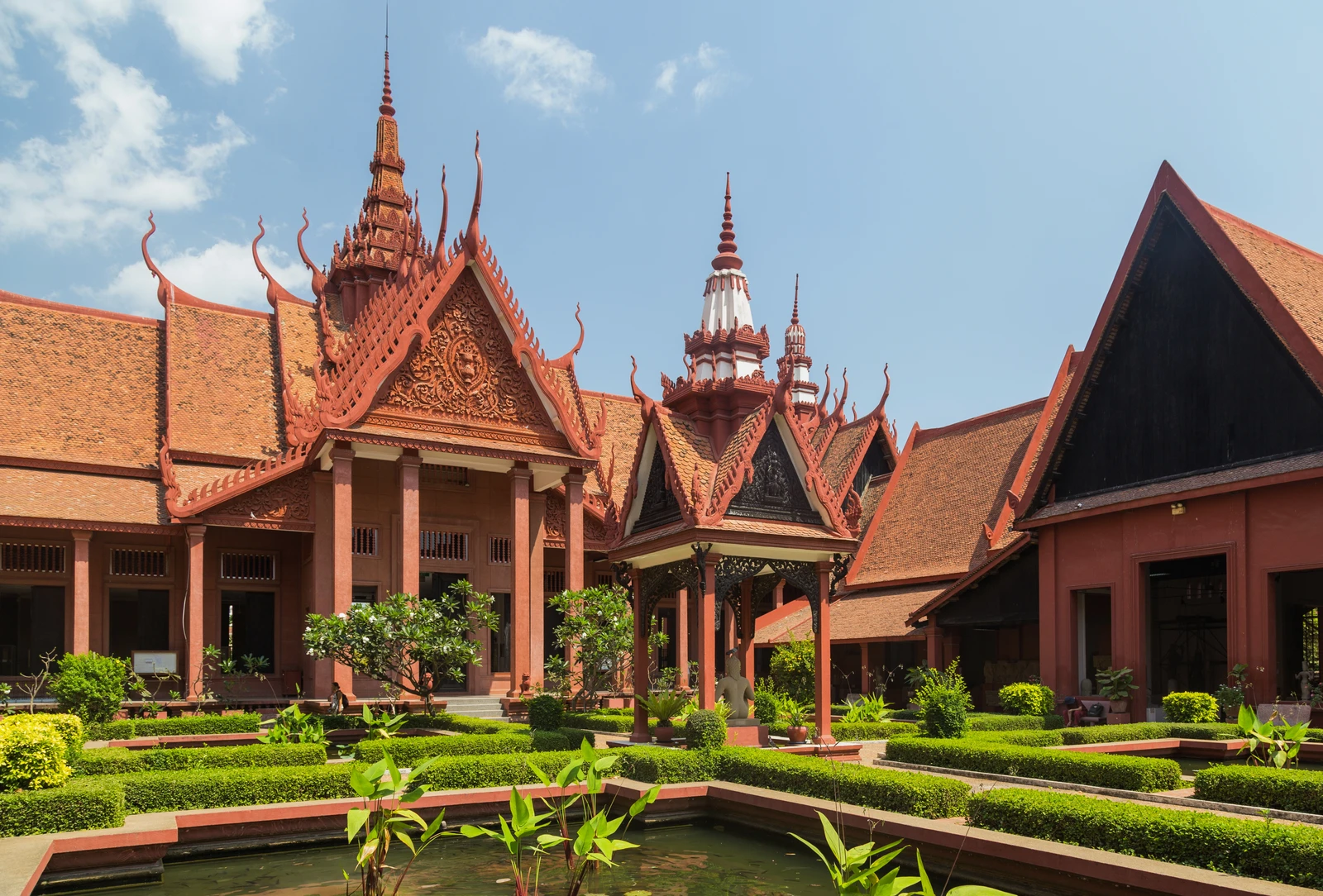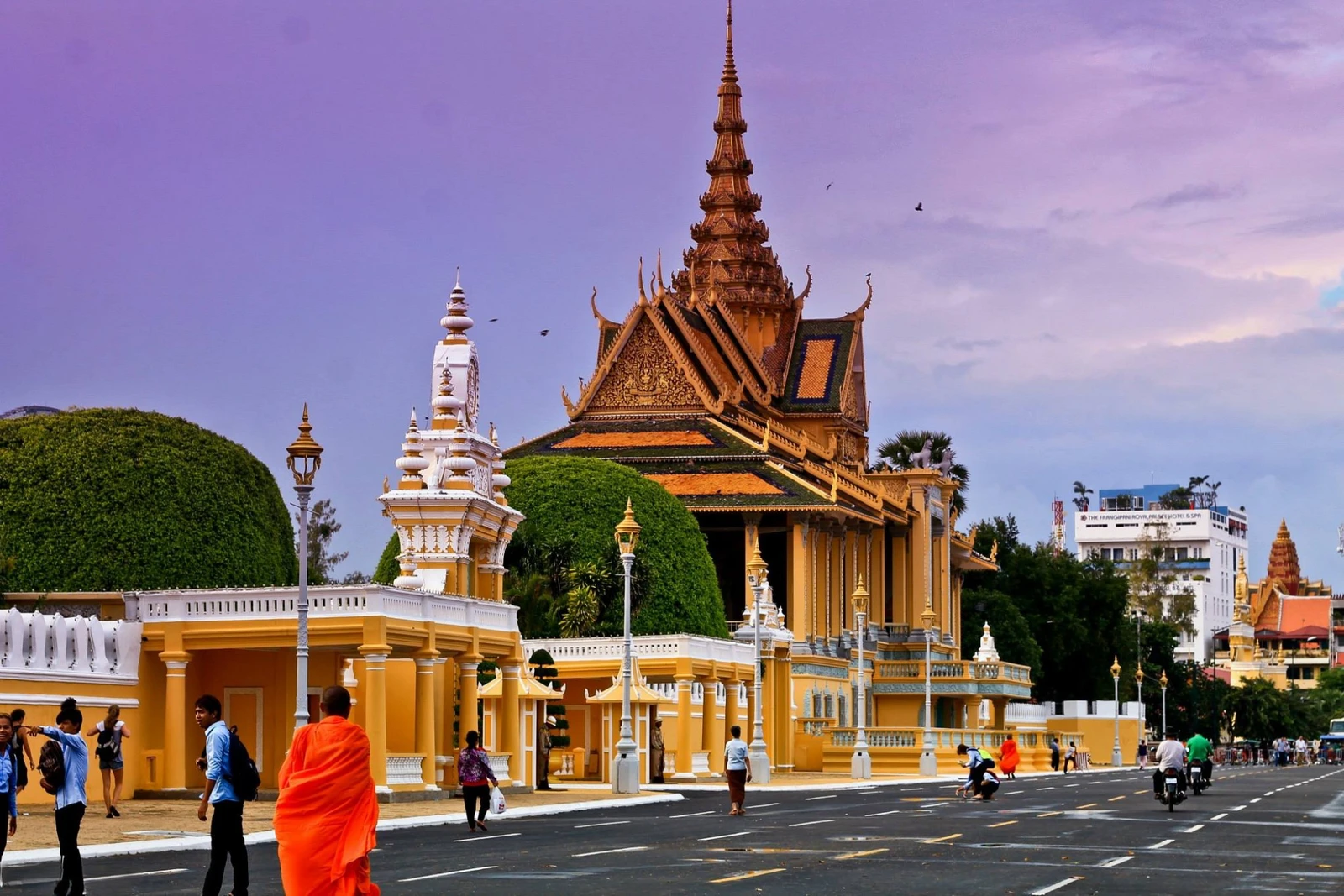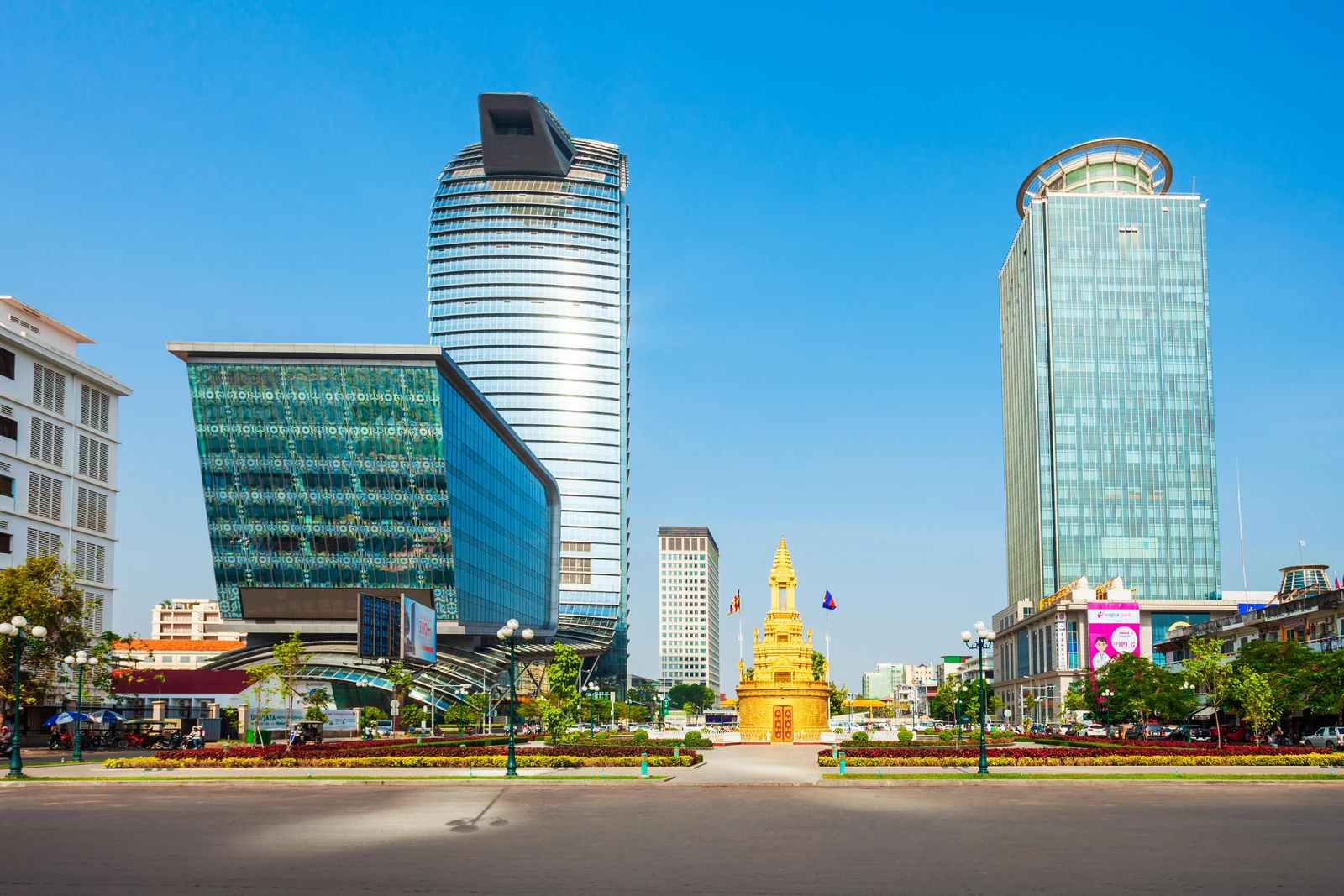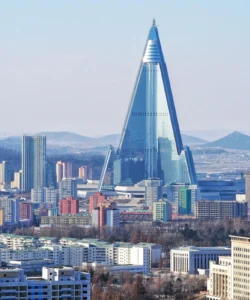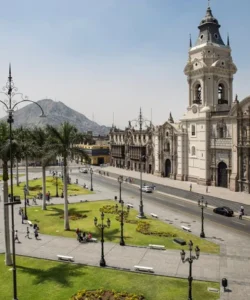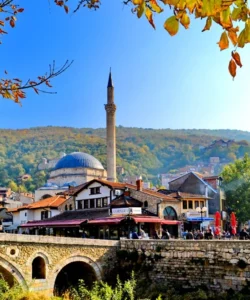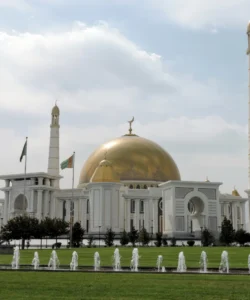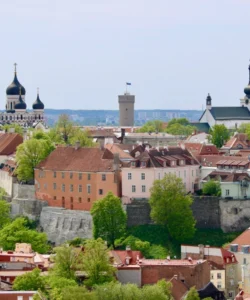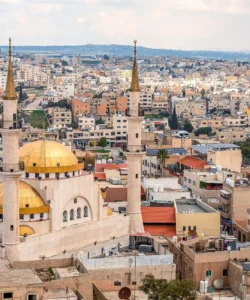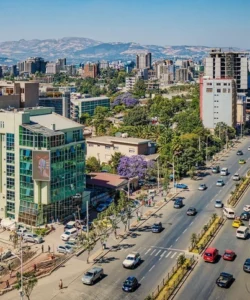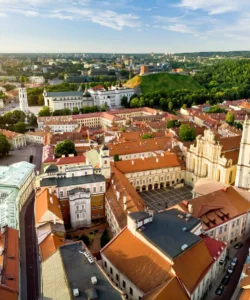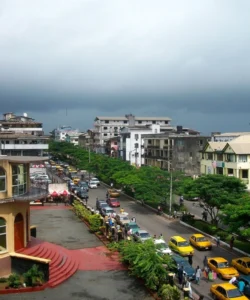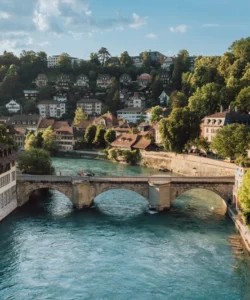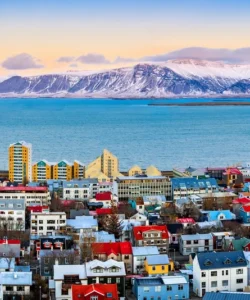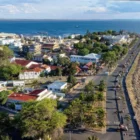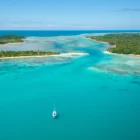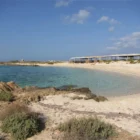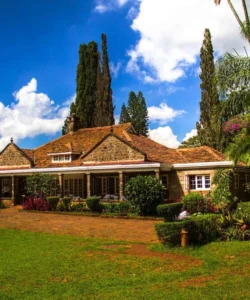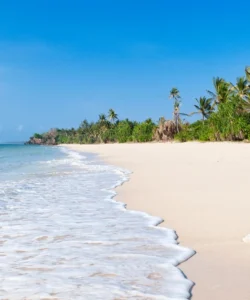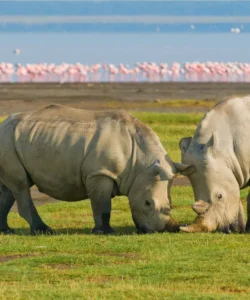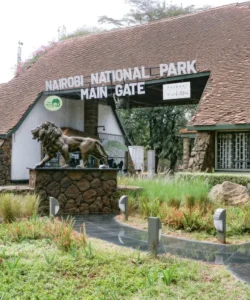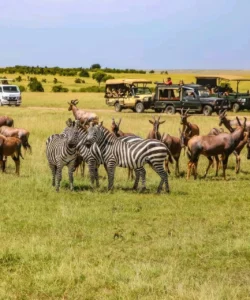Phnom Penh, the vibrant capital city of Cambodia, is a fascinating blend of historical grandeur and bustling urban life. Once known as the “Pearl of Asia” in the 1920s, it carries the weight of a complex past, particularly the tragic Khmer Rouge era, while also showcasing a dynamic resurgence and rich cultural heritage.

Name: Phnom Penh (Khmer: ភ្នំពេញ, literally “Penh’s Hill”)
Address: Phnom Penh is located in south-central Cambodia, at the confluence of the Mekong, Tonlé Sap, and Bassac rivers. Its central location makes it a hub for national and international travel.
How to Get There:
Phnom Penh is Cambodia’s primary international gateway and well-connected:
- By Air: The most convenient way for international travelers is to fly into Phnom Penh International Airport (PNH). PNH has direct flights from numerous cities in Asia (Bangkok, Kuala Lumpur, Singapore, Ho Chi Minh City, Seoul, Beijing, etc.). From the airport, it’s about a 45-minute to 1-hour drive (depending on traffic) to the city center. Taxis, ride-hailing apps (Grab, PassApp), or hotel transfers are readily available.
- By Bus: Long-distance buses connect Phnom Penh with major Cambodian cities (like Siem Reap, Battambang, Sihanoukville) and neighboring countries (Vietnam and Thailand). The journey from Siem Reap takes about 5-7 hours. Reputable bus companies offer comfortable services.
- By Boat: A scenic but slower ferry service operates between Siem Reap and Phnom Penh via Tonlé Sap Lake during the wet season (roughly June to October/November). This offers a unique glimpse into rural Cambodian life but can be seasonal and less reliable than buses.
- By Car/Taxi: Private taxis can be hired from other Cambodian cities or at border crossings.
- Getting Around Phnom Penh City:
- Tuk-tuk: The most common and charming mode of transport for tourists. Easily found everywhere, and drivers can be hired for half-day or full-day tours.
- Remork-moto (similar to tuk-tuk): Another popular local option.
- Ride-Hailing Apps: Grab and PassApp are widely used for taxis and tuk-tuks, often offering fixed prices.
- Motorbike (Motodop): A quick way to get around for solo travelers, but ensure safety.
- Bicycle: Possible for exploring specific neighborhoods, but traffic can be challenging.
Landscape and Architecture:
Phnom Penh’s landscape is flat, dominated by its rivers, and its architecture reflects a fascinating, often stark, contrast between its glorious past, its tragic recent history, and its rapid modern development.
- Riverside Promenade (Sisowath Quay): The city’s social heart is the wide riverside promenade, where the Tonlé Sap meets the Mekong. It’s lined with cafes, restaurants, and hotels, and offers views of traditional boats.
- Royal Palace and Silver Pagoda: The most prominent and beautifully preserved traditional Khmer architecture is found within the Royal Palace complex. This includes:
- The Royal Palace: The official residence of the King of Cambodia, with its traditional multi-tiered Khmer roofs and gilded decorations.
- The Silver Pagoda (Wat Preah Keo Morakot): Named for its floor, which is covered with 5,000 silver tiles. It houses a magnificent Emerald Buddha statue and a life-sized golden Buddha adorned with diamonds.
- National Museum of Cambodia: A beautiful example of traditional Khmer architecture adapted for museum purposes. Its terracotta color, tiered roofs, and intricate carvings make it a striking structure that complements its extensive collection of Khmer art and artifacts.
- Colonial Buildings: Remnants of Cambodia’s French colonial past are visible in stately government buildings, charming shophouses, and grand villas, particularly around the riverside and central market areas. Many are now repurposed as hotels, restaurants, or galleries.
- Art Deco Central Market (Phsar Thmei): A distinctive Art Deco architectural gem built in the 1930s. Its unique central dome with four wings radiating out forms a cross shape, providing a cool and airy space for vendors and shoppers.
- Wat Phnom: The city’s namesake and spiritual heart, located on the only significant hill in the city. The pagoda itself is a traditional Khmer-style Buddhist temple.
- Modern High-Rises: In stark contrast to its historical core, Phnom Penh’s skyline is rapidly evolving with numerous modern high-rise buildings, skyscrapers, and contemporary shopping malls, reflecting rapid economic growth and foreign investment.
- Genocidal Sites (Stark “Architecture”): The most somber and impactful “architecture” is found at sites related to the Khmer Rouge regime:
- Tuol Sleng Genocide Museum (S-21 Prison): A former high school brutally converted into a prison and torture center. The architecture is that of an ordinary school, which makes its horrific history even more chilling.
- Choeung Ek Genocidal Centre (The Killing Fields): A former orchard and mass grave site. The central Buddhist stupa, filled with over 5,000 human skulls, is the main architectural element, serving as a memorial and a powerful testament to the atrocities.
What Makes It Famous:
- Cambodia’s Capital and Economic Hub: Phnom Penh is the political, economic, and cultural heart of Cambodia, a bustling metropolitan center.
- Royal Palace & Silver Pagoda: These magnificent complexes are central to its fame, showcasing the splendor of Cambodian royalty and traditional Khmer artistry.
- Complex History: “Pearl of Asia” to Khmer Rouge Legacy: The city’s fame is deeply intertwined with its dramatic history, from its colonial elegance as the “Pearl of Asia” to the devastating period of the Khmer Rouge. It is a place for profound historical reflection, particularly at the Tuol Sleng Genocide Museum and the Killing Fields.
- Confluence of Rivers: Its strategic location at the confluence of three major rivers gives it a unique geographical character and a charming riverside ambiance.
- Cultural Resurgence: Despite its past, Phnom Penh is experiencing a vibrant cultural and economic resurgence, with a growing arts scene, modern cafes, and lively markets.
- Nightlife and Dining: The city offers a dynamic and diverse dining scene, from street food to fine dining, and a growing array of bars and entertainment options.
- Phnom Penh as a Base: It serves as a base for exploring surrounding areas, including Udong (former capital) and various temples.
Differences from Some Other Wonders:
- Capital City with Tragic Recent History: Unlike purely ancient wonders (Angkor Wat, Borobudur) or natural landscapes, Phnom Penh is a living capital city whose fame is inextricably linked to its very recent and tragic history of the Khmer Rouge regime. The genocidal sites (Tuol Sleng, Killing Fields) are a unique and somber aspect that makes it distinct from most other capital cities.
- Confluence of Major Rivers: Its strategic location at the confluence of three significant rivers (Mekong, Tonlé Sap, Bassac) directly impacts its landscape, transport, and identity in a way not seen in landlocked or coastal capitals.
- Blend of Royal, Colonial, and Tragic Architecture: While other cities might have colonial buildings, Phnom Penh offers a particularly poignant juxtaposition of royal Khmer architecture, elegant French colonial villas, and the stark, repurposed buildings of the Khmer Rouge era, providing a deeply layered architectural narrative.
- Developing Urban Dynamic: Compared to highly developed and polished cities like Singapore or Kuala Lumpur, Phnom Penh offers a more raw, rapidly developing urban experience, with a visible mix of old and new, and less polished infrastructure in some areas.
- Not a Single Iconic Landmark: While it has the Royal Palace, its fame isn’t dominated by one singular skyscraper (like Petronas Twin Towers) or natural wonder (Mount Kinabalu). Instead, its “wonder” lies in the collective experience of its diverse historical layers, vibrant street life, and poignant memorials.
- Resilience and Rebuilding Narrative: The city embodies a powerful story of resilience and rebuilding, making it a place of both profound sadness and inspiring hope, a narrative that distinguishes it from places with a less tumultuous recent past.
